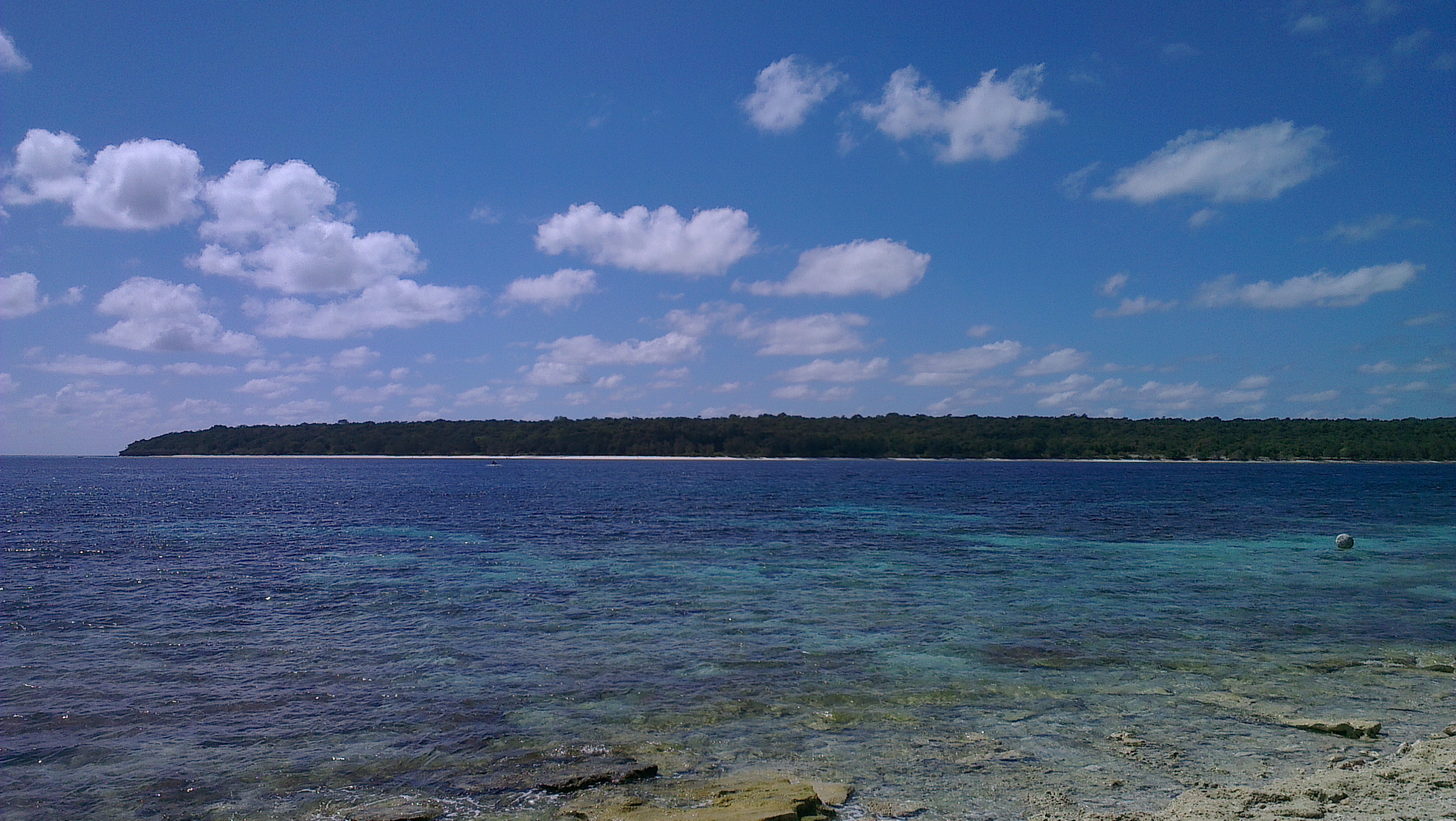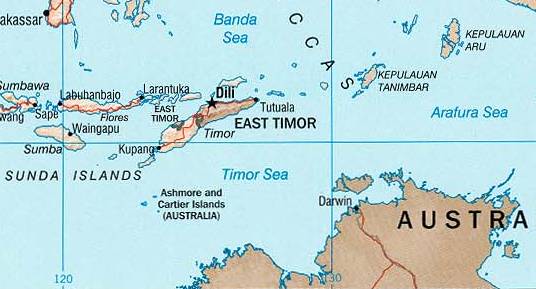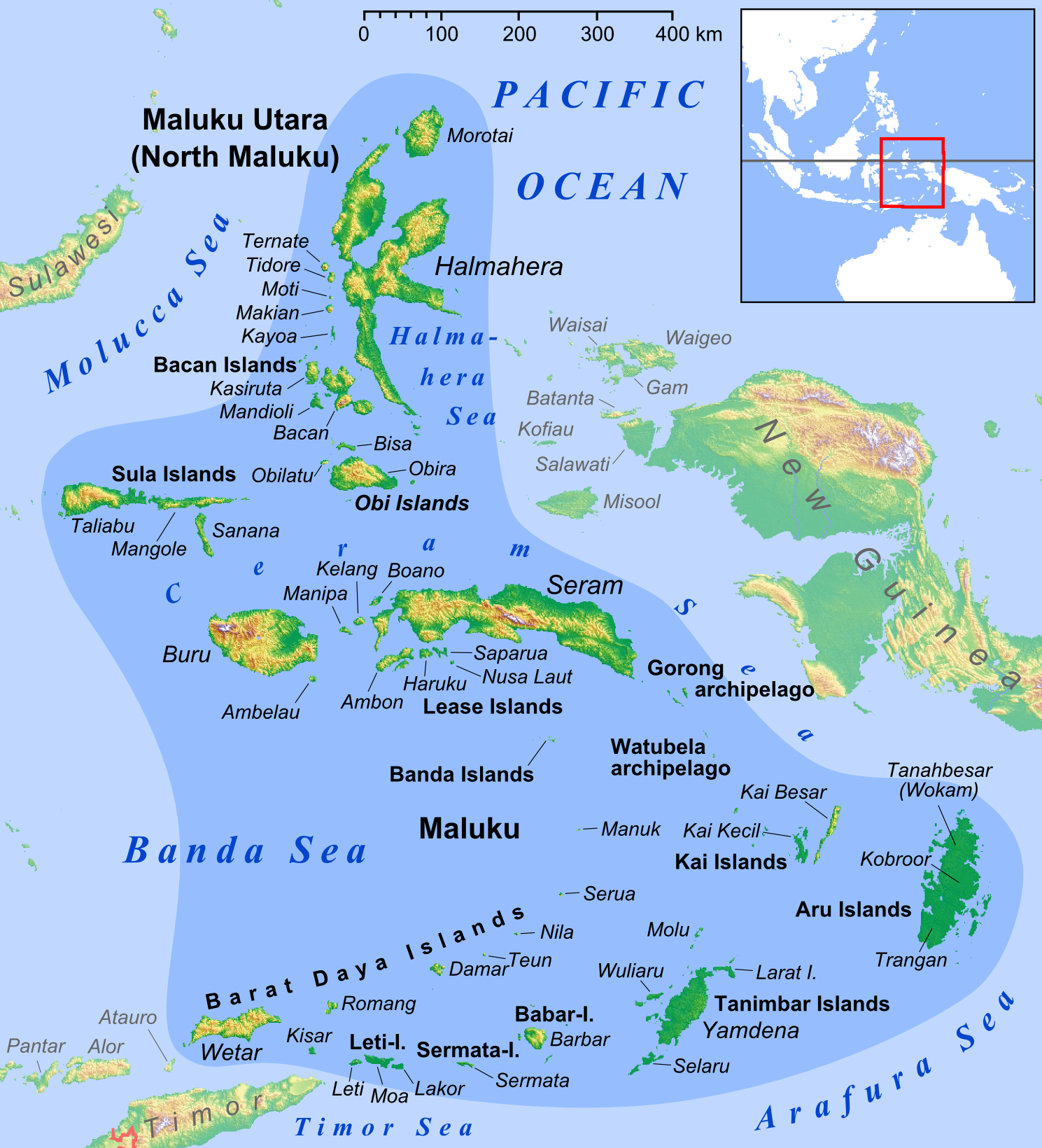|
Lautém Municipality
Lautém (, ) is one of the municipalities (formerly districts) of East Timor, at the eastern end of the country. It has a population of 64,135 (census 2010) and an area of 1,813 km2. Its capital is Lospalos, which lies 248 km east of the national capital, Dili. Etymology The word ''Lautém'' is a Portuguese approximation of the local Fataluku language word ''Lauteinu''. That word, in turn, is a portmanteau of the Fataluku words ''lau'' ('cloth') und ''tein'' ('sacred'), ie 'sacred cloth'. The mythical ancestors of today's municipal population were known as ''Lauteinu'' or ''Lauteira''. Geography To the west the municipality borders the municipalities of Baucau and Viqueque. To the north lies the Banda Sea, and to the south the Timor Sea. The municipality also includes the easternmost point of the island, Cape Cutcha in the administrative post of Tutuala, and the small island Jaco. The borders of the municipality of Lautém are identical to those of the ... [...More Info...] [...Related Items...] OR: [Wikipedia] [Google] [Baidu] |
Municipalities Of East Timor
Timor-Leste is ISO 3166-2, divided into 14 municipality, municipalities (, ), which are former districts. One municipality is also a Special Administrative Region (SAR). The municipalities are divided into administrative posts of Timor-Leste, administrative posts (former subdistricts), and further subdivided into sucos of Timor-Leste, sucos (villages). Atauro, Atauro Island was initially a part of Dili Municipality, but became a separate municipality on 1 January 2022. The borders between Cova Lima and Ainaro and between Baucau and Viqueque were changed in 2003. The municipalities in Timor-Leste are largely inherited from the earlier regencies of East Timor (province), the Indonesian province, all of which were created on 30 July 1976 during the New Order (Indonesia), New Order. List By population Source: National Institute of Statistics Timor-Leste. See also * List of municipalities of Timor-Leste by Human Development Index * East Timor (province)#Administrative div ... [...More Info...] [...Related Items...] OR: [Wikipedia] [Google] [Baidu] |
List Of Municipalities Of East Timor By Households
Timor-Leste is divided into 14 municipalities (, ), which are former districts. One municipality is also a Special Administrative Region (SAR). The municipalities are divided into administrative posts (former subdistricts), and further subdivided into sucos (villages). Atauro Island was initially a part of Dili Municipality, but became a separate municipality on 1 January 2022. The borders between Cova Lima and Ainaro and between Baucau and Viqueque were changed in 2003. The municipalities in Timor-Leste are largely inherited from the earlier regencies of the Indonesian province, all of which were created on 30 July 1976 during the New Order. List By population Source: National Institute of Statistics Timor-Leste. See also * List of municipalities of Timor-Leste by Human Development Index * Administrative divisions of Timor Timur Province * Administrative posts of Timor-Leste * Sucos of Timor-Leste * ISO 3166-2:TL References External links * – official ... [...More Info...] [...Related Items...] OR: [Wikipedia] [Google] [Baidu] |
Lautém (city)
Lautém is a town in the suco of Pairara, Lautém administrative post, Lautém Municipality of Timor-Leste. When Timor was a Portuguese overseas province, Lautém was known as ''Vila Nova de Malaca''. Football In football Football is a family of team sports that involve, to varying degrees, kick (football), kicking a football (ball), ball to score a goal (sports), goal. Unqualified, football (word), the word ''football'' generally means the form of football t ..., the municipality of Lautém is represented by AS Lero, club affiliated to LFA, which disputes Liga Futebol Amadora Terceira Divisão. Tourism Tourists who visit the place usually register images of the Lautem Fort in photographs. However, the main tourist attractions in the village are the beautiful beaches. References Statoids.com Lautém Municipality {{EastTimor-geo-stub External Sources * The Modern Endangered Archives Program has a collection oVaihoho Sung-Poems from Lautém ava ... [...More Info...] [...Related Items...] OR: [Wikipedia] [Google] [Baidu] |
Portuguese Timor
Portuguese Timor () was a Portuguese colony on the territory of present-day East Timor from 1702 until 1975. During most of this period, Portugal shared the island of Timor with the Dutch East Indies. The first Europeans to arrive in the region were the Portuguese in 1515.West, p. 198. Dominican friars established a presence on the island in 1556, and the territory was declared a Portuguese colony in 1702. Following the beginning of the Carnation Revolution (a Lisbon-instigated decolonisation process) in 1975, East Timor was invaded by Indonesia. However, the invasion was not recognized as legal by the United Nations (UN), which continued to regard Portugal as the legal Administering Power of East Timor. The independence of East Timor was finally achieved in 2002 following a UN-administered transition period. History Early Europeans Prior to the arrival of European colonial powers, the island of Timor was part of the trading networks that stretched between India and China ... [...More Info...] [...Related Items...] OR: [Wikipedia] [Google] [Baidu] |
Jaco Island
Jaco Island (, , Fataluku language, Fataluku: or ) is an uninhabited island in Timor-Leste, a country occupying the eastern end of the island of Timor in the Lesser Sunda Islands in Southeast Asia. It lies off the eastern tip with Cape Cutcha of the island of Timor (Aldeia Pitileti, Sucos of Timor-Leste, Suco Tutuala, Administrative posts of Timor-Leste, administrative post Tutuala Administrative Post, Tutuala, Municipalities of Timor-Leste, municipality Lautém Municipality, Lautém). Overview Jaco is made of limestone formed from coral. Limestone cliffs and coral reefs surround the densely forested island, which is part of the Nino Konis Santana National Park. Jaco Island lies just off the eastern end of the island of Timor, part of the Tutuala subdistrict in Lautém District, and is separated from the mainland in front of Valu Beach by a channel or strait (known as Jaco Strait) navigable by small vessels. Jaco is regarded as sacred by the local population because the ... [...More Info...] [...Related Items...] OR: [Wikipedia] [Google] [Baidu] |
Timor Sea
The Timor Sea (, , or ) is a relatively shallow sea in the Indian Ocean bounded to the north by the island of Timor with Timor-Leste to the north, Indonesia to the northwest, Arafura Sea to the east, and to the south by Australia. The Sunda Trench marks the deepest point of the Timor Sea with a depth of more than 3300 metres, separating the continents of Oceania in the southeast and Asia to the northwest and north. The Timor sea is prone to earthquakes and tsunamis north of the Sunda Trench, due to its location on the Ring of Fire as well as volcanic activity and can experience major cyclones, due to the proximity from the Equator. The sea contains a number of reefs, uninhabited islands and significant hydrocarbon reserves. International disputes emerged after the reserves were discovered resulting in the signing of the Timor Sea Treaty. The Timor Sea was hit by the worst Montara oil spill, oil spill for 25 years in 2009. It is possible that Australia's first inhabitants cros ... [...More Info...] [...Related Items...] OR: [Wikipedia] [Google] [Baidu] |
Banda Sea
The Banda Sea (, , ) is one of four seas that surround the Maluku Islands of Indonesia, connected to the Pacific Ocean, but surrounded by hundreds of islands, including Timor, as well as the Halmahera Sea, Halmahera and Ceram Seas. It is about 1000 km (600 mi) east to west, and about 500 km (300 mi) north to south. Extent The International Hydrographic Organization (IHO) defines the Banda Sea as being one of the waters of the East Indian Archipelago. The IHO defines its limits as follows: ''On the North'' The Southern limits of the Molucca Sea, Molukka Sea and the Western and Southern limits of the Ceram Sea. ''On the East.'' From Tg Borang, the Northern point of Noehoe Tjoet [Kai Besar], through this island to its Southern point, thence a line to the Northeast point of Fordata, through this island and across to the Northeast point of Larat, Tanimbar Islands (), down the East coast of Jamdena [Yamdena] Island to its Southern point, thence through Anggarma ... [...More Info...] [...Related Items...] OR: [Wikipedia] [Google] [Baidu] |
Viqueque Municipality
Viqueque (, ) is the largest of the municipalities (formerly districts) of East Timor. It has a population of 77,402 (Census 2010) and an area of 1,877 km2. The capital of the municipality is also named Viqueque. Etymology The word ''Viqueque'' is a Portuguese approximation of the local Tetun-Terik word ''Vikeke'' (or ''Wekeke''), which has been translated as both 'eroding water' and 'water' (''we'') 'bracelet' (''keke''). The background to the latter translation is that a warrior leader, Luka, is said once to have been on a campaign with his warriors against the Wehali people, who had entered Luka's lands via Suai, Same, and Manatuto. During the campaign, he and the warriors came upon a spring guarded by an old woman. After the woman had given the warriors the water they had asked for, they cut off her arm, on which she had been wearing a bracelet. They then took the arm and bracelet to their king, Nai Lu Leki, who hung the arm in a tree. He also kept the bracelet a ... [...More Info...] [...Related Items...] OR: [Wikipedia] [Google] [Baidu] |
Baucau Municipality
Baucau (, ) is a municipality, and was formerly a district, of East Timor, on the northern coast in the eastern part of the country. The capital is also called Baucau (formerly Vila Salazar). The population of the municipality is 111,694 (census 2010) and it has an area of 1,506 km2. Etymology The word ''Baucau'' is derived from the word "Akau", which means "pig" in the local Waimoa language. During the Portuguese colonial era, the name of the district was transformed, first into ''Macau'' and finally into ''Baucau''. An alternative name for the Baucau community is ''Wailia-Wailewa'', meaning the "great water spring of Wai Lia". In the Wai Lia area (part of the '' suco'' of ), a large spring is located under large trees; it is both an animist and a Christian holy place. In 1936, the Portuguese colonial authorities renamed what was then the district of Baucau as "São Domingos". However, that name, like other imperial-sounding names adopted in the colony at about that ... [...More Info...] [...Related Items...] OR: [Wikipedia] [Google] [Baidu] |
Portmanteau
In linguistics, a blend—also known as a blend word, lexical blend, or portmanteau—is a word formed by combining the meanings, and parts of the sounds, of two or more words together.Garner's Modern American Usage p. 644. English examples include '' smog'', coined by blending ''smoke'' and ''fog'', and '''', from ''motor'' ('' motorist'') and ''hotel''. A blend is similar to a [...More Info...] [...Related Items...] OR: [Wikipedia] [Google] [Baidu] |
Fataluku Language
Fataluku (also known as Dagaga, Dagoda', Dagada) is a Papuan language spoken by approximately 37,000 people of Fataluku ethnicity in the eastern areas of East Timor, especially around Lospalos. It is a member of the Timor-Alor-Pantar language family, which includes languages spoken both in East Timor and nearby regions of Indonesia. Fataluku's closest relative is Oirata, spoken on Kisar island, in the Moluccas of Indonesia. Fataluku is given the status of a national language under the constitution. Speakers of Fataluku normally have a command of Tetum and/or Indonesian, those speakers who are educated under Portuguese rule or from younger generation educated under Portuguese-language educational system during independence speak Portuguese. It has a considerable number of Austronesian loanwords, and it has borrowed elements of Sanskrit and Arabic vocabulary via Malay and elements of Portuguese. The five main Fataluku dialects are identified as follows: East Fataluku, Sout ... [...More Info...] [...Related Items...] OR: [Wikipedia] [Google] [Baidu] |
Dili
Dili (Portuguese language, Portuguese and Tetum language, Tetum: ''Díli'') is the Capital city, capital and largest city of Timor-Leste. It lies on the northern coast of the island of Timor, in a small area of flat land hemmed in by mountains. The climate is tropical, with distinct wet and dry seasons. The city has served as the economic hub and chief port of what is now Timor-Leste since its designation as the capital of Portuguese Timor in 1769. It also serves as the capital of the Dili Municipality, which includes some rural subdivisions in addition to the urban ones that make up the city itself. Dili's growing population is relatively youthful, being mostly of working age. The local language is Tetum language, Tetum; however, residents include many internal migrants from other areas of the country. The initial settlement was situated in what is now the old quarter in the eastern side of the city. Centuries of Portuguese rule were interrupted in World War II, when Dili be ... [...More Info...] [...Related Items...] OR: [Wikipedia] [Google] [Baidu] |







